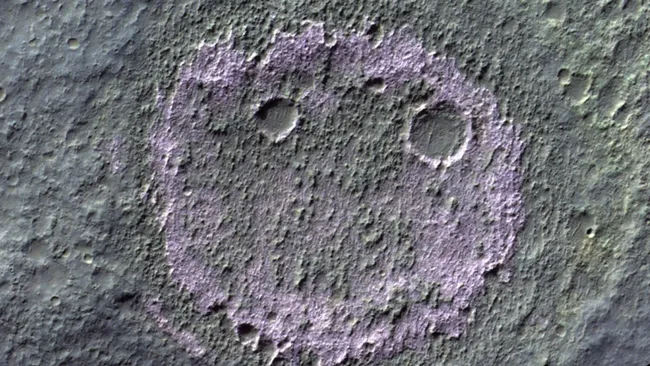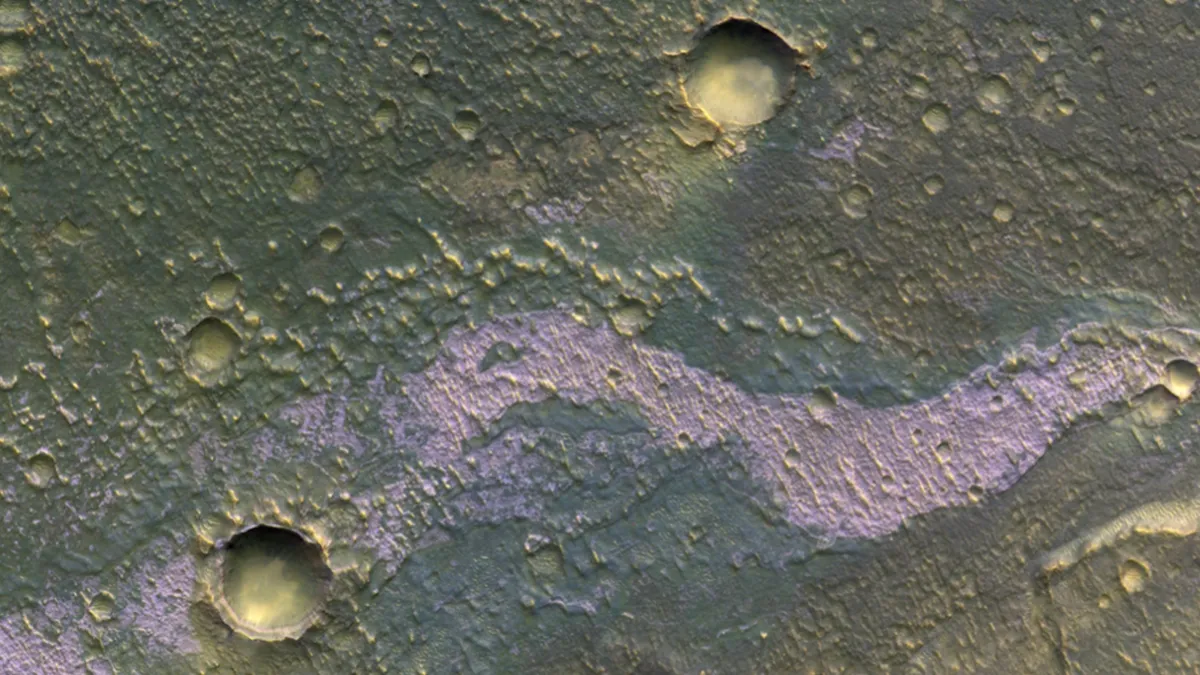Scientists detect ancient ‘smiley face’ on Mars
- September 12, 2024
- 0
Newly released images of Mars show a “smiling” salt deposit on the Red Planet’s surface. A related study suggests that similar deposits from ancient lakes could be a
Newly released images of Mars show a “smiling” salt deposit on the Red Planet’s surface. A related study suggests that similar deposits from ancient lakes could be a

Newly released images of Mars show a “smiling” salt deposit on the Red Planet’s surface. A related study suggests that similar deposits from ancient lakes could be a good place to look for traces of past life on Mars.
Astronomers recently spotted a strange glowing “smiley face” on the surface of Mars while exploring alien landscapes as part of a new study. Only visible under certain conditions, the smiley-like structure is the remnant of an ancient lake that dried up billions of years ago and may contain traces of ancient life on the Red Planet.
The European Space Agency (ESA) released an image of the smiling face in an Instagram post on September 7. The smiling shape, which consists of a ring of ancient chloride salt deposits along with a pair of meteorite crater eyes, was captured by ESA’s ExoMars Trace Gas Orbiter, which has been analyzing methane and other gases in Mars’ thin atmosphere since 2016.
Usually such deposits are indistinguishable from the rest of the Martian surface, but when observed with infrared cameras like the ExoMars Orbiter, the salts appear pink or purple.
The photo was taken as part of a study published Aug. 3 in the journal Scientific Data, in which researchers created the first reliable catalog of chloride salt deposits on Mars using images from the ExoMars orbiter. In total, the team identified 965 distinct deposits scattered across the alien world, ranging in size from 1,000 to 10,000 feet (300 to 3,000 meters). It’s not clear at this time how large the statement is.
These deposits are particularly important because they “may provide optimal conditions for biological activity and preservation,” making them “prime targets for astrobiological studies,” the researchers wrote in the paper.

Mars was once a water world with lakes, rivers, and a shallow ocean similar to Earth’s. However,
The waters dried up 2–3 billion years ago following severe climate change. This was probably due to the loss of Mars’ magnetic field, which caused the solar wind to gradually strip away much of the planet’s atmosphere, eventually causing most of the liquid water to freeze or evaporate into space.
The researchers wrote that the last of the water in Martian lakes eventually disappeared as the planet’s “dynamic water history” left behind salty deposits. They added that in some places, salt deposits are the only evidence that water was there. But these deposits could also be crucial in the search for evidence of ancient life on Mars.
Researchers believe that as Martian lakes begin to shrink and disappear, the remaining water will become very salty, allowing it to remain liquid despite temperatures as low as minus 40 degrees Fahrenheit (minus 40 degrees Celsius), ESA said.
These latter salt pools “could have been a haven” for microbial extremophiles that may have survived Mars’ transformation, the researchers wrote in a statement, causing their remains to accumulate in these sediments when the water finally dried up. If that happens, the salts could also act as a preservative, keeping evidence of these extinct lifeforms intact for billions of years.
Recent major discoveries also suggest that Mars now has much more water than we first thought, reviving hopes of finding Martian microbes living on the Red Planet in the future. In June, astronomers announced the discovery of “at least 150,000 tons” of water ice at the peaks of some of Mars’ tallest volcanoes. And in August, scientists discovered that a vast hidden ocean could be lurking beneath the Red Planet’s surface, containing enough water to cover the planet with 1 mile (1.6 km) of water.
Source: Port Altele
As an experienced journalist and author, Mary has been reporting on the latest news and trends for over 5 years. With a passion for uncovering the stories behind the headlines, Mary has earned a reputation as a trusted voice in the world of journalism. Her writing style is insightful, engaging and thought-provoking, as she takes a deep dive into the most pressing issues of our time.